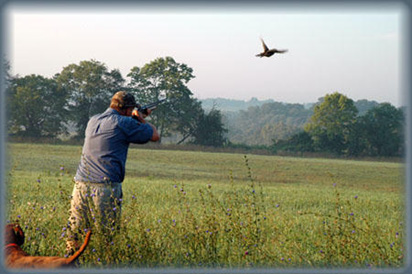

 The Accurate Reloading Forums
The Accurate Reloading Forums  THE ACCURATE RELOADING.COM FORUMS
THE ACCURATE RELOADING.COM FORUMS  Hunting
Hunting  Bird Shooting
Bird Shooting  Favorite Duck Loads?
Favorite Duck Loads?Go  | New  | Find  | Notify  | Tools  | Reply  |  |
| One of Us |
I've been in this discussion before.....and I offered that per the laws of physics: mass increases in proportion to velocity.....but only as you reach the speed of light. Not many softball pitchers can throw THAT hard. That said, why then does a brick, for example, do so much more damage thrown from say 10' at 40mph rather than 5mph? Same mass, right? SPEED KILLS, especially with steel. The answer is simple though, ducks don't really know the difference when hit in the head at 20-30yds. at 1250 or 1625fps. Increase it to 40yds. and that's when 3.5" #2 or BB come into their own IMHO......talking steel only here. | |||
|
| One of Us |
Yes, larger and faster pellets have more energy. The question we have to answer here is how much pellet energy do we need to penetrate the vital areas of the duck, not which one has more! So a pellet has to have some minimum terminal velocity to maintain some minimum amount of energy for penetrating purposes. But, once the pellet has enough energy (kinetic energy may be the correct term here) to penetrate the vital areas of the bird in question and at the range in question, then it has "enough" and having “more” doesn't necessarily make it better. More isn't always better -- sometimes it is just more! Once you have reached the minimum pellet energy threshold for the type of bird you are shooting and at the range it is being shot, then it’s just a matter of having enough pellets in the pattern to reliably hit the vital areas, and of course putting the pattern where it counts is a must, too. I'll let y'all do the math or use a ballistics program to crunch the numbers to compare various pellets and velocities, I'll again defer to CONSEP/Roster's extensive terminal ballistics research on over 23,000 one-shot kills at known distances and angles to determine the minimum pellet energy needed to penetrate and the minimum pattern counts necessary to be effective. As far as going-away or butt shots, if you had to take them regularly then yes larger pellets would probably be better since the birds vitals are mostly protected by the back bone and the gizzard. It is interesting to note that when CONSEP/Roster did research on nontoxic pheasant loads this was shown to be a factor since pheasant are normally shot as going-away targets. As a result, the larger steel #2s proved to be the best for roosters. Good luck. | |||
|
| One of Us |
Interesting indeed, as I've been known to use steel 2s for pheasant. As you have a problem if you're found with any lead shot while waterfowling, I sometimes will leave the lead at home altogether and just use steel after waterfowling (we do both in a morning quite a bit; first ducks then upland). So, put a check mark next to my name for those who say #2 steel works well on pheasant. ______________________ Hunting: I'd kill to participate. | |||
|
| Powered by Social Strata | Page 1 2 |
| Please Wait. Your request is being processed... |
|

Visit our on-line store for AR Memorabilia

